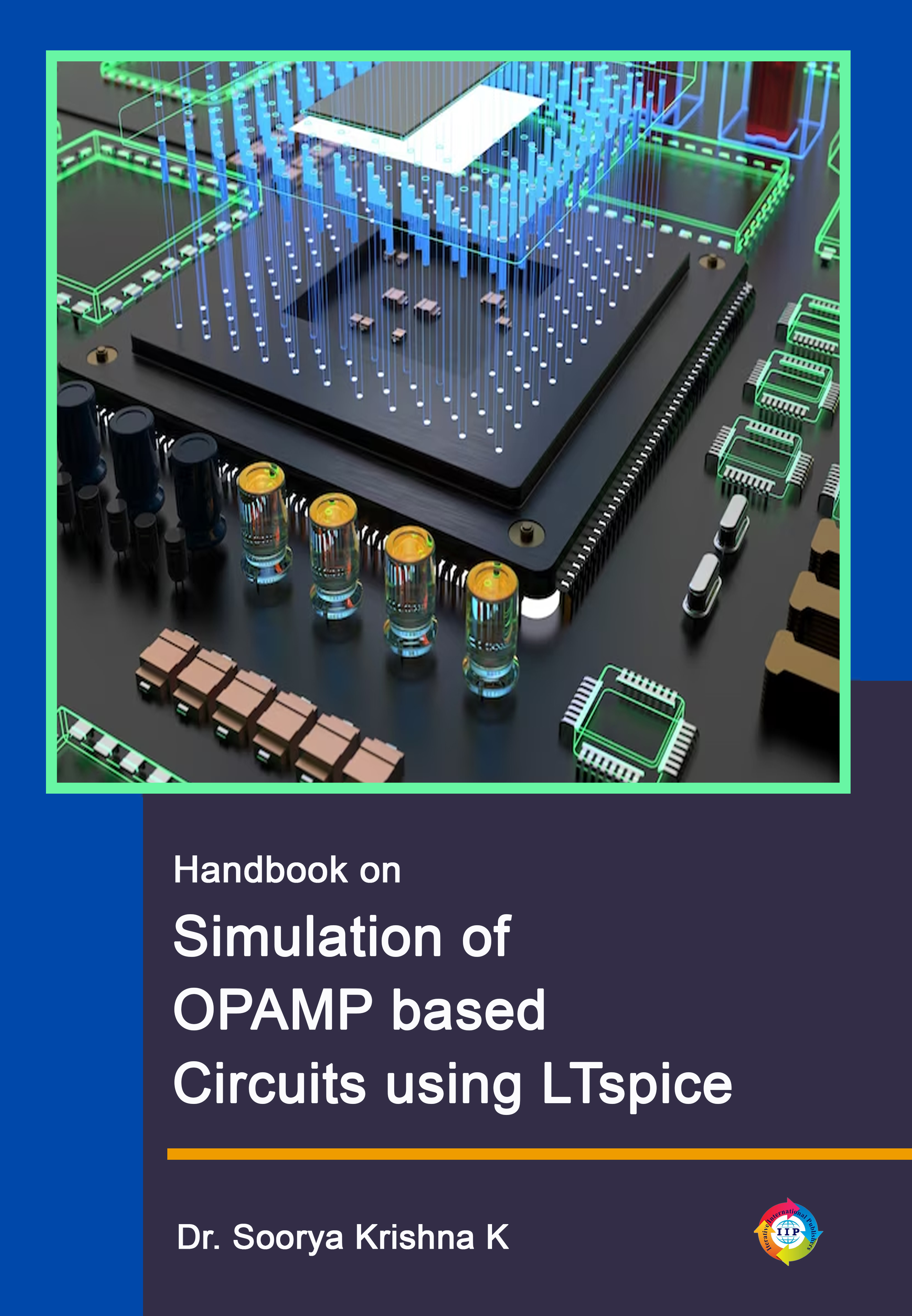
HANDBOOK ON SIMULATION OF OPAMP BASED CIRCUITS USING LTSPICE
-
TypeEbook
- CategoryAcademic
- Sub CategoryText Book
- StreamElectronics and Communications Engineering
The new National Education Policy (NEP) document places greater emphasis on practical teaching over theoretical classroom instruction. Consequently, several universities have introduced an increased number of labs, subjects coupled with labs, internships, mini-projects, main projects for extended durations, industry-related subjects, courses offered by industries, and more. The primary objective is to equip students with skills upon graduation. Furthermore, companies in the electronics field now expect students entering their ranks to be proficient in simulating circuits using software rather than relying solely on theoretical knowledge.
This signifies a drastic change aimed at enhancing teaching methodologies and the curriculum. Many engineering subjects can be effectively taught using simulations. Students will become acquainted with modern tools. From my teaching experience, I've observed that students grasp circuit operations more effectively when they witness circuit results. I've employed this approach while teaching subjects such as analog circuits, basic electronics, Verilog HDL, and linear integrated circuits. Hands-on experience tends to engage students more and facilitates better learning.
The intention behind writing this book is to advocate teaching OPAMP-based subjects in conjunction with simulations, rather than solely through theoretical instruction. The book focuses on fundamental circuits using operational amplifiers (OPAMPs), serving as the basic circuits for simulation. Design and simulations of inverting amplifiers, differentiators, integrators, comparators, filters, oscillators, multivibrators, precision rectifier circuits, etc., are covered in this book.
Faculty members are encouraged to incorporate simulations into their teaching methods, while students are encouraged to learn the subject by simulating and verifying the theory they've learned. The book emphasizes understanding circuit operations, designing circuits, observing parameters, examining output waveforms, and briefly discussing resultant waveforms. It's not aimed at absolute beginners in OPAMP circuits and does not include derivations for expressions like gain, etc.
LTspice software is used for these simulations. It's freely available for download from their website, chosen for its convenience in allowing simulations on laptops/desktops from the comfort of our homes. Additionally, this software can handle reasonably complex circuits and allows the utilization of corresponding models if specific components are unavailable.
Although this book employs LTspice software, these circuits can be simulated using other commercial software. The process of circuit design, verification of output waveforms, and circuit operations remains consistent. The book is structured to enable users to create and verify circuits provided they understand how to use the software; the simulation concepts themselves remain unchanged.
All circuits covered in this book are simulated using LTspice, and their output waveforms are cross-checked with theoretical knowledge. After completing each simulation, tasks are provided to encourage students to practice circuit design and verify outputs. I urge you to utilize this book when learning OPAMP and 555 timer-based circuits.
|
Buy From |
||
|---|---|---|
| IIP Store | ₹ 136 | |
| Amazon Kindle | ₹ 170 | |
| View Demo | View Demo | |





COMMENTS
2b0hjr
kgygfo
hd4d2e
n6v6ww
07wrj5
z266mt